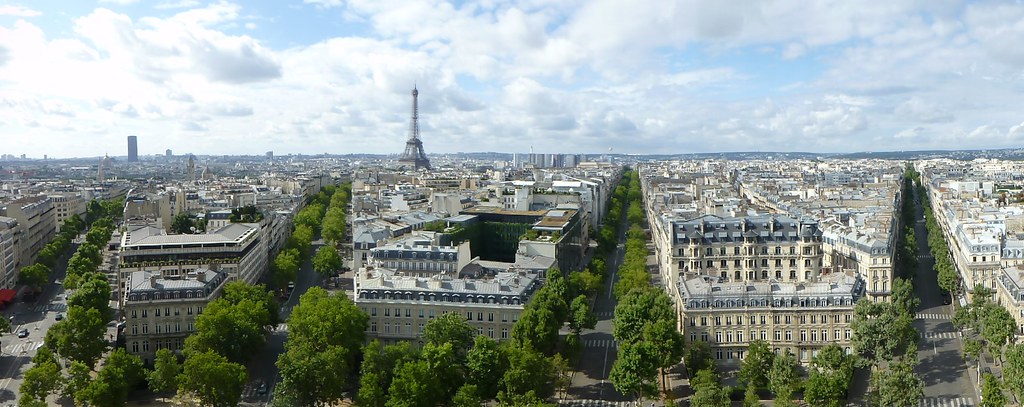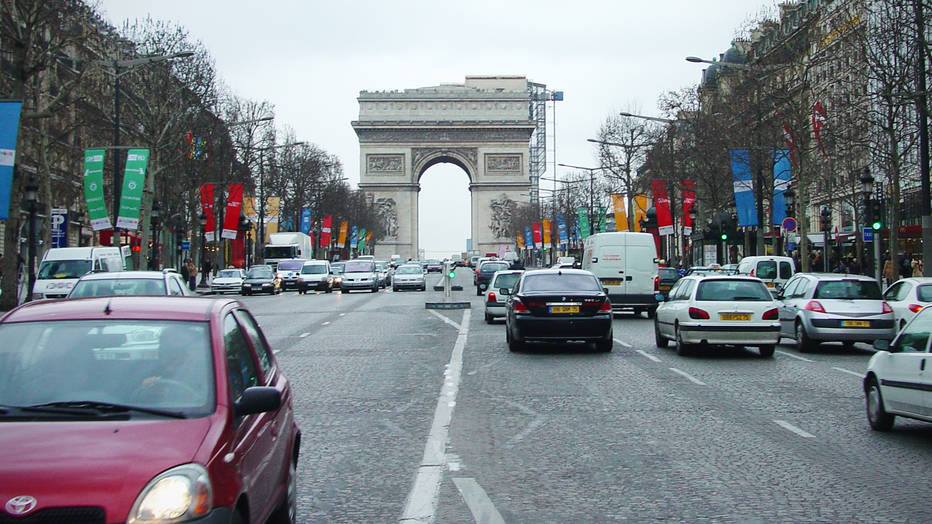Driving Distances and Times from Paris
Touring France on the road is a unique experience every Francophile should have. This is an activity that offers breathtaking sights of the countryside and phenomenal stops while tourists visit their French destinations. Therefore, if you would be doing this, there is the need to be equipped with information on driving in the country.
There is also the need to know about distances and times since you will be on the road for a while. This allows you to prepare for your trip properly and even add items to your itinerary. Regardless of where you are driving in France from Paris, ensure you visit the Parisian tourist office for more information and a map.
>>Also Read: Paris Travel Blog
Here Are The Driving Distances And Times from Paris to Some Major Cities:
Paris to Nice
A trip from Paris, the French capital to the beautiful city of Nice, is a 931 km distance. Tourists will most likely drive along the A6, and A7 roads, and they can travel through the Alp mountain ranges, Massif, Burgundy, and through Lyon. It will take you 9 hours to travel from Paris to Nice.
>>How to Get from Paris to Nice
>>How to Get from Paris to the South of France
>>Is Nice Worth Visiting?
Paris to Reims
A Paris to Reims’ trip can be the highlight of your vacation. This is because you get to see phenomenal sights along the road that will live in your memory for a long, long while. Reims is about 134 km from Paris, and you will reach them under 90 minutes along the A4 route.
Paris to Caen
The city of Caen is 201 km, and Paris is 201 km apart along the A13 route. It will take about two-and-half hours of exciting activities on the road. Travelers can even have stopovers if they are not in a hurry.
Paris to Nantes
Nantes is just 385 km away from Paris through the A11 route. Visitors will be treated to more than three hours of stunning French and central landscape.
Paris to Lyon
The city of Lyon is just 465 km from Paris. When tourists travel along the A6 route, they will be treated to striking Massif, Burgundy, and Alp mountain ranges. The trip is barley three hours and is a brilliant way to see the eastern French area that is located in mountain landscapes.
>>Is Lyon Worth Visiting?
>>What is Lyon Known For
>>Is Lyon Safe?
>>Is Lyon Expensive?
Other Major Cities
>>How to Get From Paris to Amboise
>>How to Get From Paris to Burgundy
>>Best Weekend Trips From Paris by Train
>>How to Get from Paris to Avignon
>>How to Get From Paris to Bordeaux
>>Best Day Trips from Paris
>>How to Get From Paris to Loire Valley
>>How To Get From Paris To Marseille
>>The Most Beautiful Road Trips in France

Here is What You Need to Know About Driving in France:
Generally, driving in France is an amusing feeling for anyone familiar with the congestions faced on roads in some of the busiest cities in the world. Asides big places like Paris, Marseilles, Lille, or Toulouse, the A1 (Paris-Lille), the A10 (Paris-Bordeaux), the A6, the A7, and the A9 (Paris-Marseille-Nice-Perpignan), except the busiest holidays weekends, there is often free traffic on the major network.
Motorway
When you are driving in France despite its cost, it is often worth it to take autoroutes (motorways), except you have time on your hands to proceed at a more comfortable pace. But there are few tips to assist you in reducing costs on the road across France. As for gasoline, do not fill up on the autoroute and wait till the main convergence close to a city, and come off the autoroute. Visitors should wait to discover a superstore with a kilometer that offers a reduced price on gasoline. They can save as much as 15 centimeters per liter.
For tourists who plan to do lots of driving in the country, it is recommended that they have a diesel car, especially a modern one that does not consume too much fuel. In France, diesel fuel used to be cheaper than unleaded it is no like that any longer. Now, diesel sells for around 15 times less than unleaded
In France, motorways are also known as autoroutes and are assigned with numbers that follow the letter A. Therefore, when driving to the south of the country, say from Calais, visitors can either use the A16 autoroute approaching Paris and Amiens. Alternatively, the A26 motorway is an easier route through Reims.
Many French autoroutes are toll roads, and entries to them bear a ‘Péage’ print. The usual process involves picking a ticket at the booth as one enters the autoroute. Then tolls will be paid wither when one departs the autoroute or when the toll area reaches an end. In some places, there are unchangeable toll points on the autoroute, markedly in toll bridges and urban sections.
Lots of os toll-gates are both for Telepéage and card payment. This means that if one has a Telepéage transponder, they may still get delayed behind those who are making payment by card. Also, cash payment toll-gates do give change.
It is important to note that French motorway tolls usually increase more or less as per inflation every February. French inflation is about 1% (low). Therefore, the cost of motorway travel for a vehicle without a trailer or a caravan will be about 1 euro for 10 miles. It will be recalled that in January 2020, motorway tolls on the 1060 km trip from Calais to the city of Marseille, through Reims, nearly all of it on toll motorways, cost about 92.20 euros. In January 2020 conversion rate that will be about 80 pounds.
Trunk Roads
On your road trip within France, you will encounter trunk roads. In the country, they are referred to as routes nationales. But in the plan of the government, local authorities take responsibility for the majority of roads. As for road numbering in France, “A” roads like A71 are motorways or Autoroutes, “N” roads are trunk routes, meaning the National network while the “D” roads are roads managed by the county or local department.
When driving, it is good to follow destinations instead of road numbers. The result of devolving responsibilities for the road is somewhat curious. For example, if anyone wants to travel by following road numbers, it will be confusing. As such, drivers following the N13 south from Cherbourg, for example. Will be lost at Caen because it becomes the D613. This is confusing to locals and can be more frustrating for tourists driving in France.
Also, observe that France showcases European route numbers where necessary. With a white number on a green background, they are marked for all to see. That is why the A6 motorway from the capital to Lyon is marked as E15, being a continental route coursing from Inverness to Algeciras.
Gas Stations and Overnight Stops in France
Nearly all gas stations in the country accept MasterCard and Visa. But be mindful with 24 h automatic pumps that you will find in the forecourts of a supermarket. Lots of them do not accept credit cards without PINs and integrated chips.
There are many hotels and other accommodation options in France. There are the likes of Mercure (3 stars), Novotel (3 stars), Campanile (3 stars), etc., have outlets close to motorway exits from around cities and towns, and exits from toll motorways.
Driving Distances and Travel Times from Paris – Summary
If you are holidaying in France, you may spend an amazing time in Paris. The city is the most visited in the world where visitors will be regularly charmed by the ravishing architecture, the liveliness of a bubbling cosmopolitan, and the unique luxury. However, this beautiful city is not the only place to see in France. There is plenty more to experience than just a road trip from the capital.
